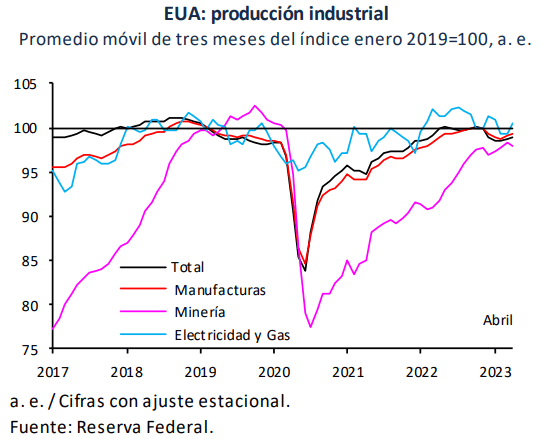U.S. industrial production showed a slight decline in the first quarter of 2023, falling 0.1% at a seasonally adjusted quarterly rate after contracting 0.6% during the fourth quarter of 2022.
What explains the decline? Above all, the deterioration in electricity and gas generation, derived from the lower demand for heating due to the unusually warm temperatures at the beginning of the year and, to a lesser extent, from manufacturing activity.
According to the Bank of Mexico (Banxico), this was partially mitigated by the rebound in mining production.
After the weakness exhibited in the first quarter of this year, industrial production advanced in April, driven mainly by the expansion of the manufacturing sector.
This largely reflected the increase in vehicle production.
In addition, recent purchasing managers’ indices point to a recovery in manufacturing production in the second quarter, in an environment of resilient domestic demand that contrasted with a contraction in external demand.
Industrial production
To note: this has occurred against a backdrop of monetary tightening in the U.S. economy.
In the United States, economic activity moderated its pace of expansion in the first quarter of 2023 compared to that recorded in the fourth quarter of 2022.
Gross Domestic Product (GDP) grew at a seasonally adjusted quarterly rate of 0.3% in the first quarter of 2023, after growing 0.6% in the fourth quarter of 2022.
The quarterly increase in GDP was affected by the negative contribution of the change in inventories and, to a lesser extent, residential investment.
This was mainly offset by the positive impact of private consumption and government spending.

Another factor supporting growth was non-residential investment, although the latter has lost dynamism, in part, due to higher interest rates.
Expressed as a seasonally adjusted annualized quarterly rate, the change in U.S. GDP was 1.3% in the first quarter of 2023 and 2.6% in the fourth quarter of 2022.
![]()

